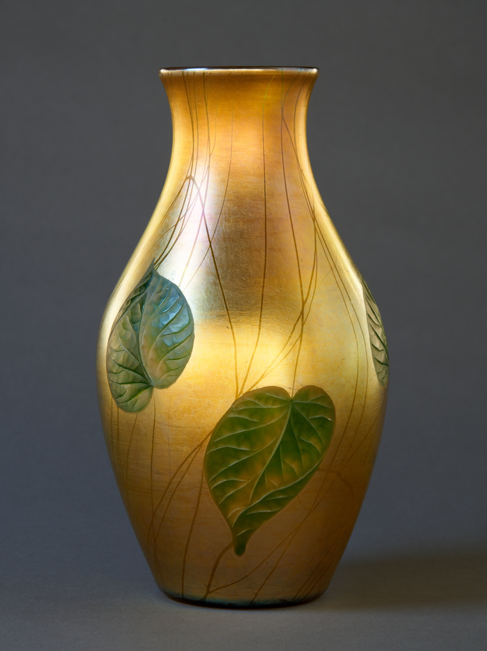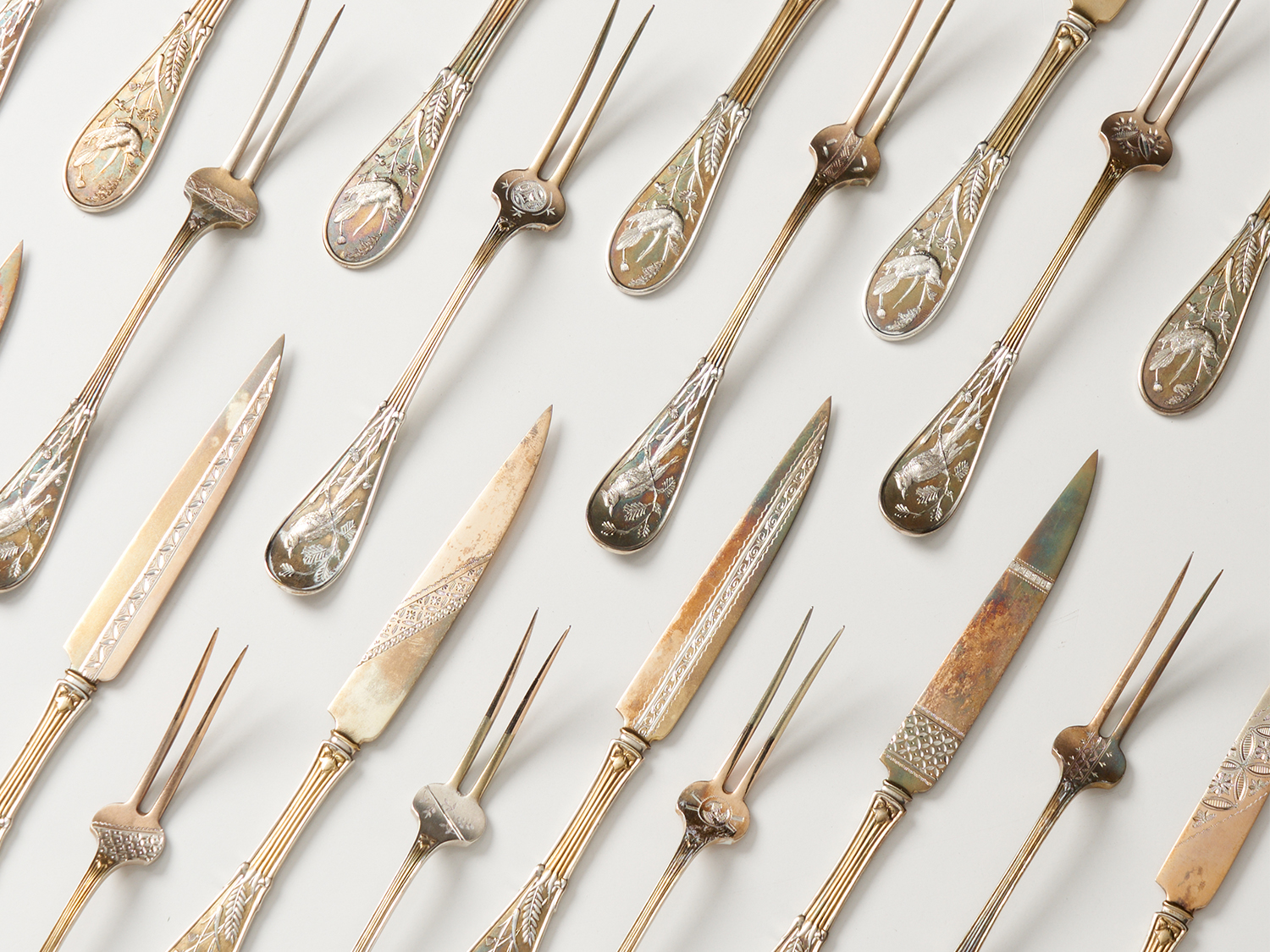Tiffany is a name long associated with American elegance and luxury, developed in turn by both Charles Lewis Tiffany and his son Louis Comfort Tiffany, pioneers in their own crafts.
Tiffany & Co. was founded in 1837 by American jeweller and entrepreneur Charles Lewis Tiffany, together with his friend John B. Young, as Tiffany & Young. In its early years, the company traded primarily in stationery, statuettes, curiosities, and European-designed items such as fans, pottery, and furniture. Following their early success, in 1841 the pair brought on a third business partner, J.L. Ellis – marking the formation of Tiffany, Young & Ellis. This new partnership allowed the company to expand its inventory to include fine jewellery, setting it on a new trajectory.
In addition to their interest in gemstones, the firm built a reputation for retailing silver. Initially purchasing their silver from various silversmiths of the period such as Gorham, William Gale, John C. Moore and later his son Edward C. Moore. Such was the success of this collaboration that, by 1851, Moore and son were creating exclusively for the Tiffany company and within a few years of this new partnership Tiffany’s had forged themselves as the leading silversmiths in New York.
The significance of Tiffany’s contribution to American silversmithing is perhaps best exemplified in 1852, when Tiffany introduced the English .925 sterling silver standard to the United States for its silver products, later influencing assaying standards subsequently adopted by the US government.
In 1853 Young and Ellis both retired, and Tiffany obtained sole control of the firm, which was thereafter known as Tiffany & Co.
After John C. Moore retired, his son Edward became chief designer and head of the Tiffany company silversmithing workshop, revolutionizing their designs and techniques. During the 1860s and 1870s, Tiffany began to design and manufacture various new cutlery designs such as the ‘Japanese’ pattern, which was created in 1871. The pattern symbolizes the influence of Aestheticism and Orientalism during this period of the 19th century, creating beautifully functional objects and reflecting the opulent tastes of the Victorian era, with each handle having a design of birds amongst flowers and foliage, contrasted by the blades and prongs engraved and partial gilt in various designs.

Although born into the Tiffany & co. legacy, and destined to take the reins from his father, Louis Comfort Tiffany shared his father’s appreciation of beautiful things but was more interested in forging his own path. With beginnings as an artist at the tender age of 18 and moving in circles with like-minded individuals, Louis was exposed to the Aesthetic movement and Arts and Crafts period. By 20, Louis set out on a grand tour of sorts, enjoying all the connections afforded to him by his father’s company but with the freedom to travel as an artist unencumbered by responsibility, moving throughout Europe, the Middle East and North Africa for a two-year period. This ‘grand tour’ would later influence his creative direction, as he became enamoured with the colours and designs he encountered in fabrics and architecture- a striking contrast to America during the same period. During his time abroad, he was exposed to the stained-glass windows of European medieval cathedrals, as well as Roman and Syrian glass. The iridescent sheen of these ancient vessels would go on to inform his enduring fascination with the glass medium.
By the 1870s, painting no longer satisfied his creative drive, so he turned to a wide range of artistic and decorative mediums. He designed and oversaw the production of leaded-glass windows, mosaics, lighting, glassware, pottery, metalwork, enamels, jewellery, and interior designs through his studios.
Although skilled in many disciplines, Louis became especially renowned for his innovative glasswork. In addition to his celebrated leaded-glass windows and lamps, Louis pursued extensive experimentation with glass. Despite surviving several devastating furnace fires, he remained undeterred, and in 1894 developed his signature ‘Favrile’ glass – a groundbreaking innovation in which metallic oxides were fused into the glass during production. The result was a shimmering, iridescent surface, with a distinctive lustre that revealed shifting hues depending on how the light struck the piece.
Both father and son forged their own paths, excelling in their own creative fields, and rightly receiving awards as Chevalier of the Legion of Honor in Paris in Paris Exposition Universelle in the same year, 1900.
By Chiara Curcio, Head of Decorative Arts, Design & Interiors
Top Image: Tiffany & Co, parcel gilt sterling silver ‘Japanese/Aubusson’ pattern fruit service, pattern no. 1871, 1871-1895
$3,000-4,000
October 2025
